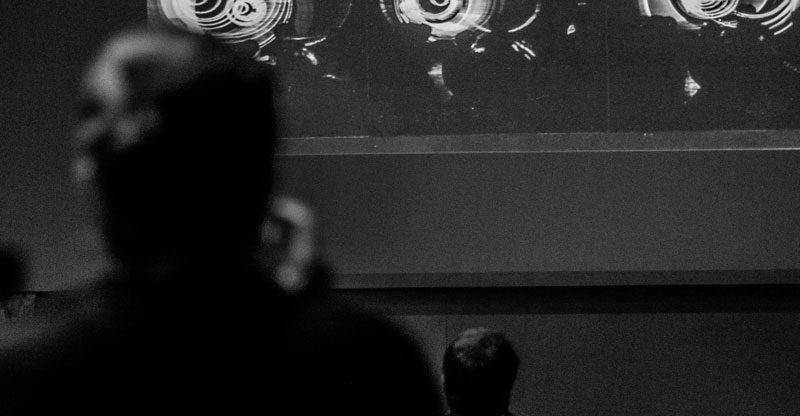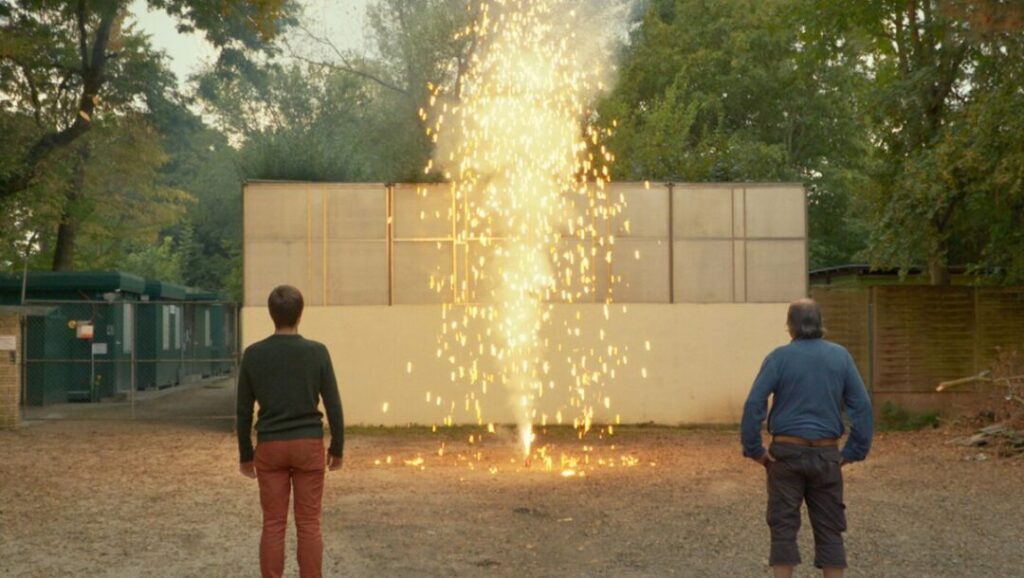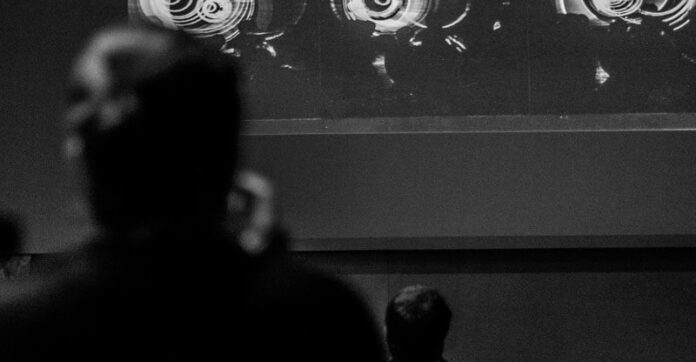By Jocelyn Szczepaniak-Gillece
Jocelyn Szczepaniak-Gillece is an associate professor in the Film Studies program at UW-Milwaukee. She is the author of The Optical Vacuum: Spectatorship and Modernized American Theater Architecture (Oxford, 2018).

This blog post is in response to the release of Ends of Cinema, an anthology co-edited by Richard Grusin and Jocelyn Szczepaniak-Gillece and based on C21’s 2018 conference of the same name. A celebratory virtual book launch with the editors and contributors will be hosted on December 11, 2020 at 3:30 pm Central.
When Richard and I began planning the Ends of Cinema conference in late summer 2017, the dangers and possibilities that cinema faced now seem almost quaint. We talked mostly about the usual bugaboos that still loomed largest: streaming media, declining theater admissions, and the increasingly paltry relevance of much big budget filmmaking for the social justice concerns that plague us remorselessly in the 21st century. Concessions, however, were doing quite well, like at the fly-by-night-looking bar that popped up in the lobby of the AMC at Mayfair Mall in Wauwatosa. That fall, Richard and I saw Blade Runner 2049 there at the one IMAX-adjacent screen in the Milwaukee area. There weren’t any replicant-themed cocktails that night, but, back again a few months after the Ends of Cinema conference, I walked past flashy overblown images of pint glasses shimmering with icy purple and orange intoxicants that corresponded, somehow, to the latest Avengers movie. If I ever thought that movies exist only to sell themselves, that put the lie to it. At least it meant the money, like the atomically bright alcohol, was flowing.
But the pandemic has taken a sledgehammer to most of our contemporary experience, and the global movie industry has been especially bludgeoned. Covid-19 and its criminal mismanagement in the US has shuttered theaters and stifled filmmaking. Blockbusters like Wonder Woman: 1984 and No Time to Die, the newest James Bond film, are kept from emptied auditoriums or distributed via HBOMax, while independent sets have suffered significantly. In San Francisco in September, the Film Commission was only issuing permits for sets with up to 12 people–including all cast and crew. Anecdotes of crew pods, kept isolated from family and other loved ones so that they are able to work at all, have cropped up throughout the Hollywood press. And while the money required for that might be possible on a large set, medium-sized indies simply can’t fund it. In some cases, according to Variety, productions have slid by not paying for Covid-19 insurance and running the risk of being entirely sidelined. While August saw production start up again after a five-month hiatus in major locations like New York and Atlanta, the more recent second and third waves have hit the country like a tsunami, and new restrictions threaten any inroads made. Theaters have endured waves of rolling shutdowns and mandates. European and American exhibition chain Cineworld closed down entirely in October. In Wisconsin in November, Governor Tony Evers announced that 54 theaters across the state were granted funds through the CARES (Coronavirus Aid, Relief, and Economic Security) Act at an average of $14,000 per screen for a total of $10 million. Whether this will solve the exhibition crisis is impossible to say, but it puts the lie to the shaky notion that cinema operates in some lofty domain untouched by public health, governance, and power.
2020’s other most important event, a long and hot summer of racial reckoning, shook the world in different ways. The Mayfair Mall that houses the AMC theater was the site on February 2 of this year of the murder of Alvin Cole. Cole, a 17-year-old Black Wisconsinite, was shot to death just outside the gleaming glass doors of the mall by Wauwatosa officer Joseph Mensah. Alongside a cavalcade of what have begun, horribly, to seem like ritualistic murders, like those of Breonna Taylor and George Floyd, Cole’s death sparked enormous protests and righteous anger. And in keeping with so many others, Cole’s murderer faced no charges. The deaths are all too real. The emotions are all too agonizing. Yet the consequences, or lack thereof, have started to seem like just so much repeated performance. That these concomitant events occur in city streets is, perhaps, expected. But they also take place at the symbolic gates of corporatism, money, consumption, and image proliferation. The unfettered actions of generations of cemented oppressive power are not just visible in courtrooms and congressional halls and prison cells. They bare their teeth in the very places where we sustain some of our most valued illusions: the luxury brand, the endless store-lined corridor, the promise of abundance without end, and the darkened theater. And any idea that we can cling to these precious comforts while claiming they are available for anyone begins to crumble into dust. Perhaps even more than the CARES Act grants offered to struggling theater chains this past month, such a terrible prophecy rips to shreds the notion that cinema can exist on its own, in a treasured pantheon alongside the sacred high holies of American corporatism.

None of this is to say that I fell out of love with the movies this year. Far from it; I’ve loved them more than ever. I’ve delved deep into different places and times, resurfacing with golden rewards. I’ve gotten to see festival films that would have been impossible to catch in previous years. I’ve found solace in some surprising places, like the ancient heavy metal psychedelia of Marcell Jankovics’ Son of the White Mare and the apocalyptic kindnesses of Maya Kosa and Sérgio Da Costa’s Bird Island. Those little miracles and so many others I’ve encountered have taken me far from the house that has become the entirety of my experience for the last nine months. They’ve shown me how rich and full of mystery the world has always been, despite our recent attempts to enclose it in shiny algorithmic clusters organized for sale, and how those enigmas wait to be reconsidered in future moments. And they make me long for sitting in a room with strangers, all attentive at the same time to the same ideas. In its best moments, that augurs a potential for democratic thinking. But in this year of devastating grief and revelation, I’ve sensed another end of cinema on the horizon. The health of our bodies, we’ve seen, does not end at the borders of our skin. History’s consequences, we’ve seen, do not end with the crossing of a new year. And cinema does not end when we walk out the doors and blink our eyes at the light. Here at the end of 2020, we have begun to reawaken to how entangled we and all of our words, actions, and creations are with one another. It’s like coming out of an isolated dream. I’m hopeful that, in the wake of this year, we see an invigorated idea of cinema that is newly political, newly imaginative, newly thoughtful, new. That will put the lie to the notion that an end is final rather than the stirrings of something unknown, an idea’s beginning.
A note about the lead image on this post: The Ends of Cinema conference poster featured an image from multimedia artist, filmmaker, and writer Aldo Tambellini. Aldo’s monumental contributions to avant-garde art, electromedia, and social justice were figured through a decades-long investment in the color black. On November 12, 2020 in Cambridge, Massachusetts, Aldo died at the age of 90.





